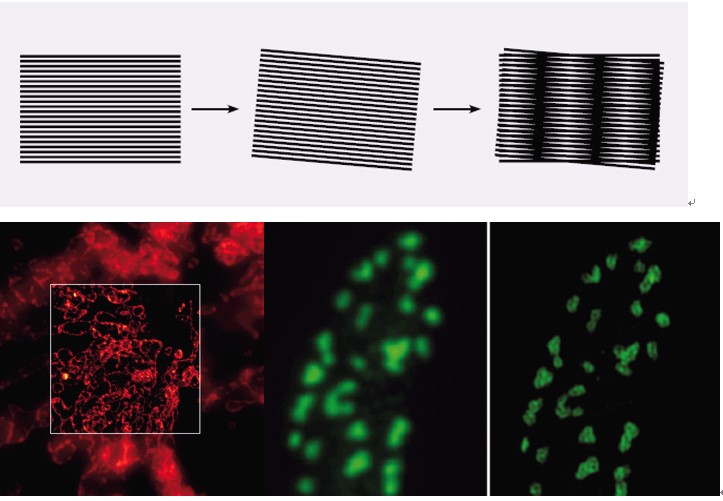Super Resolution Microscope Principle:
The Resolution of conventional optical microscopes is limited by diffraction to approximately 200nm. Several super resolution imaging techniques have broken the diffraction resolution barrier by modification of the microscope’s excitation/emission pathway, computer-assisted image analysis, or both. Some of the most promising technologies include stimulated emission depletion (STED) microscopy, structured illumination microscopy (SIM), and the family of stochastic methods exemplified by photoactivated localization microscopy (PALM) and stochastic optical reconstruction microscopy (STORM).
The technique we employed in our core facility is SIM. The method of SIM is projection a high spatial frequency grid (fig. middle) on a fine structured specimen which unable resolved by the optical objective (e.g., fig. left) to make both interfere to produce a coarser image which is a phenomenon called Moire fringes (fig. right). This coarser image containing super resolution information is able been resolved by optical objective and captured by the camera. Then we can restore this information into a super resolution image by high-end algorithms.

